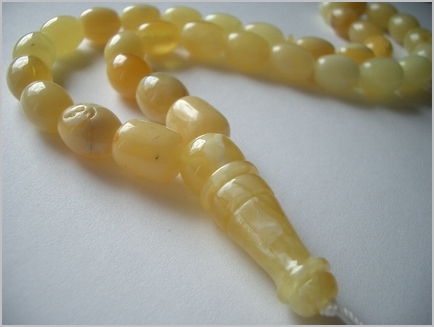It may seem hard to believe, but amber has an interesting history and a tale worth telling from generation to generation. Today's tale is amber in religion.
In the Paleolithic times known as the Early Stone Age, amber was already seen as a valuable raw material. It was also of great significant value in ornamental goods production in major civilizations across Europe, the Middle East, Asia and even the Far East for many centuries.
Amber in religion was a key point in people's beliefs. Research and excavation sites have revealed different types of amber shapes and forms. It is believed that each of them had a different significance in various cultures. Take, for example, the solar cult, a cult directly linked to fertility. As a basic attribute of this cult, the people used flat round discs made of amber. They would decorate the discs with different series of dot applications in shapes of crosses and religious symbols. Also used in fertility tribes was the symbol of the “mother-goddess”, a schematic representation found in anthropomorphic female figurines. Male figurines or phalluses were commonly associated with ancestor cults, becoming representative symbols of power, heroes and gods. All these figurines were made of amber or at least contained small fragments of the gemstone.
 Other cults, such as the battle-axe cult, would use amulets made of or containing fragments of amber in shapes such as double-headed or small axe-headed miniatures. Hunting cults would use zoomorphic figures and figurines which served as protective charms for the safe-guarding of their warriors and wearers against common dangers encountered in their hunting expeditions, such as attacks by wild animals or other tribes.
Other cults, such as the battle-axe cult, would use amulets made of or containing fragments of amber in shapes such as double-headed or small axe-headed miniatures. Hunting cults would use zoomorphic figures and figurines which served as protective charms for the safe-guarding of their warriors and wearers against common dangers encountered in their hunting expeditions, such as attacks by wild animals or other tribes.
Amber in religion was also present in Ancient Greece and Ancient Rome. For example, both Romans and Greeks thought of amber as having magical powers due to the stone's electrostatic energy. They also believed that this gave it the power to draw all misfortune away from people. And in Ancient Egypt, people also trusted in amber's magical powers. Recent findings show that among other burial habits, Egyptians would place pieces of amber beneath the hand skin of mummies. They saw it as a way of protecting the mummy from decay and destruction.
 Amber amulets buried in ancient graves were placed to protect the dead in their afterlives. For example, the Zuni Indians produce to this day various amber amulets, occasionally combined with other semi-precious stones such as turquoise,for both ritual purposes and artistic effect. These talismans would also have a protective power over the Indian tribes. These beliefs of the safeguarding and protective qualities of amber are becoming more popular in other societies as well, such as Japan and Germany. Amber in religion is found in many different cultures and forms.
Amber amulets buried in ancient graves were placed to protect the dead in their afterlives. For example, the Zuni Indians produce to this day various amber amulets, occasionally combined with other semi-precious stones such as turquoise,for both ritual purposes and artistic effect. These talismans would also have a protective power over the Indian tribes. These beliefs of the safeguarding and protective qualities of amber are becoming more popular in other societies as well, such as Japan and Germany. Amber in religion is found in many different cultures and forms.
People introduced into local folklore their convictions that amber possesses wonderful properties. These convictions lasted for centuries and are still present in some cultures today. Take, for example, the Kurpie region. Here, each bride has to wear a necklace that contains at least one amber bead with organic inclusions. The bead is both a MEDDLER and an amulet. These necklaces are handed down from grandmothers to granddaughters, from one generation to another, in great festivities and ceremonies. This is characteristic of Kurpie and Cashubian families.
We can conclude that amber has a significant value and importance, and that amber in religion has taken many forms and interpretations.
Comments
No posts found



